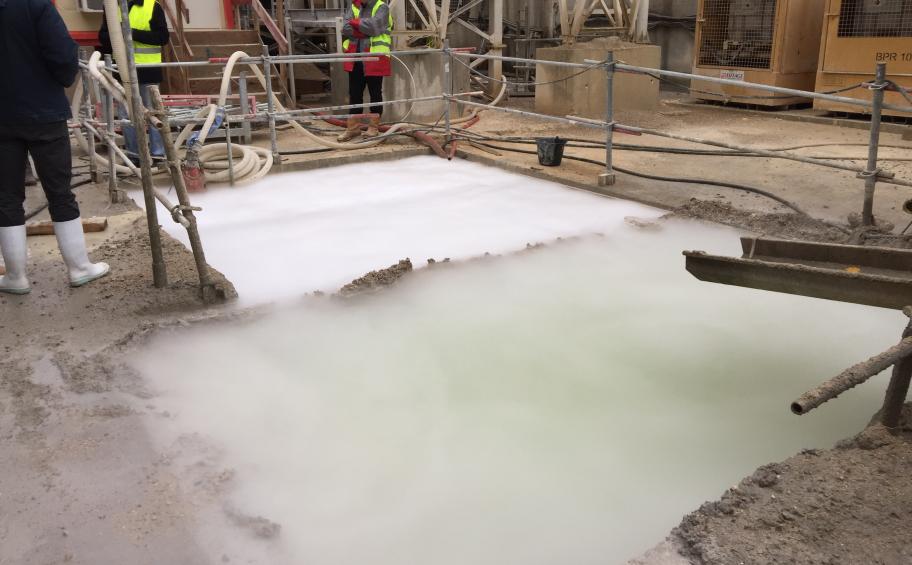This Friday, June 5, as every year, is World Environment Day. Eiffage Construction, in connection with the global approach to sustainable development followed by the Eiffage Group, participates in many aspects to the preservation of the environment and the reduction of pollution of all kinds.
Discover through this article how, thanks to carbon dioxide, Eiffage Construction limits the pollution of water from construction sites.
One of the main objectives of Eiffage’s sustainable development policy is to reduce the environmental footprint of its activities, by preserving natural resources as best as possible and by limiting or avoiding negative externalities (pollution, discharges, etc.). As a result, the teams are taking and implementing numerous initiatives to reduce the impacts of their activities on soil, water, air and the environment. The subject of pollution is dealt with as close as possible to the ground at the site and activity level.
We invest every year in this area: prevention equipment, energy-saving and moderate sound output equipment, pollution control equipment. On-site wash water recovery and treatment systems, retention devices to avoid the risk of spillage of oil or chemicals, emergency response kits and emergency simulation devices are put in place.
Clean-up can be illustrated in many ways. One of the most important aspects to be dealt with is about concrete dumps, which are systematically used on site and whose environmental impact must be limited especially at the cleaning step. Eiffage Construction innovates in order to reduce the pH of the water used to clean concrete dumps: what is called thin cements. It uses carbon dioxide to reduce these pH levels before release to the natural environment in the range of 6 to 8, in accordance with the regulations.
Concretely, every evening, the concrete dumpsters must be cleaned. The thin cements are filtered by a felt which allows to retain the gravel. But the waste water collected is polluting and has a high pH (13). Also, to lower this pH, sticks of dry ice are introduced into the tank of the decanted waters. After tests carried out in December 2015 on a site located in the 14th arrondissement of Paris, this good practice was generalized by Eiffage Construction throughout the Île-de-France region.
Other innovations exist to limit the environmental impact of cleaning these dumps. For example, we have invested in automatic equipment that injects carbon monoxide. A pH meter integrated in the water recovery tank triggers the supply of C02 that will regulate the pH, which makes it possible to reuse the water for future washes or to release it without risk of pollution. This system ensures a systematic treatment of the water, which we used for example at the Atrium site in Antony.
To learn more about these innovations, read the 2019 Extra-Financial Performance Statement (EFPD 2019) included in the Universal Registration Document (from page 296, in French): https://licence.publishpaper.com/publications/787c801e-d9c5-49af-823d-5e...

